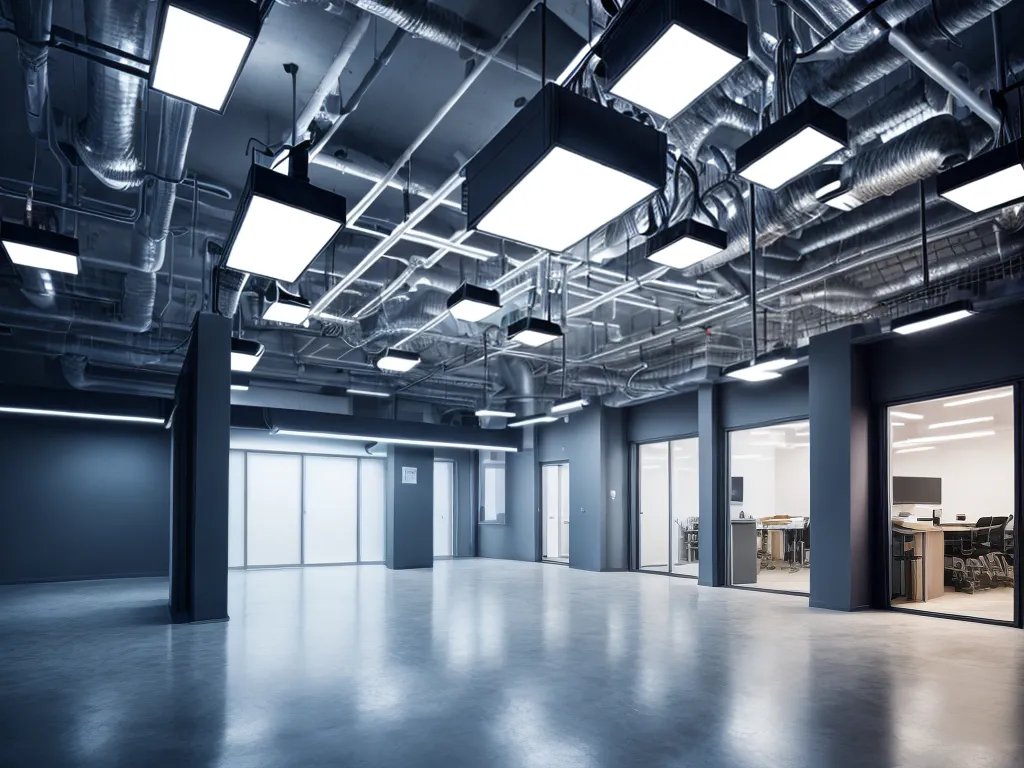
How to Reduce Your Business's Electricity Costs With Smart Lighting Systems
Introduction
Reducing electricity costs is an important way for businesses to save money. Lighting makes up a significant portion of a business's electricity usage, so upgrading to smart lighting systems can lead to major cost savings. In this article, I will provide an in-depth look at how smart lighting systems can reduce your business's electricity costs.
What Are Smart Lighting Systems?
Smart lighting systems refer to lighting setups that are automated and can be controlled remotely, often via a smartphone app or web interface. They involve installing LED lights, occupancy sensors, and daylight sensors.
Here are some key features of smart lighting systems:
-
LED lights - LEDs use up to 90% less energy than traditional incandescent bulbs. They also last much longer, reducing replacement costs.
-
Occupancy sensors - These detect motion and automatically turn lights on or off based on room occupancy. No more lights left on in empty rooms!
-
Daylight sensors - Daylight sensors measure incoming natural light and dim artificial lights when sufficient daylight is available.
-
Smart controls - Smart lighting systems can be controlled via a centralized control panel or an app/web dashboard. This enables remote control of lighting based on schedules and occupancy.
How Do Smart Lighting Systems Reduce Electricity Costs?
There are several ways that smart lighting systems help cut electricity costs for businesses:
1. Reduce Wasted Electricity from Unoccupied Spaces
The occupancy sensors in smart lighting systems automatically turn lights off when a space becomes unoccupied. No more unnecessary lighting in empty rooms or offices! This can reduce lighting electricity usage by 30-70% in spaces with fluctuating occupancy.
2. Take Advantage of Natural Daylight
The daylight sensors in smart lighting systems track incoming natural light and automatically dim artificial lights when sufficient daylight is available. On sunny days, this can reduce the lighting electricity load by 20-40%.
3. Enable Scheduled Lighting and Centralized Control
Using the smart controls, building managers can set schedules to turn lights on and off. Lights can also be dimmed or turned off as needed from a central dashboard. This ensures lights are only on when needed, avoiding waste.
4. Transition to Efficient LED Lighting
As part of a smart lighting upgrade, switching to LED lights immediately cuts lighting electricity use by 50-70% compared to traditional bulbs. This generates huge energy savings.
5. Reduce Maintenance Costs
LED lights last 5-10 times longer than incandescent or fluorescent lighting. With smart lighting systems, failed lights can also be identified remotely. Together, these maintenance benefits lower costs.
Real-World Examples of Business Electricity Savings
Many businesses have already upgraded to smart lighting systems and seen substantial cost reductions. Here are some real-world examples:
-
An office building installed a smart lighting system and saw lighting electricity costs drop by $48,000 per year, a 60% reduction.
-
A retail chain outfitted 200 stores with smart lighting systems. This is saving them $3 million in electricity costs annually across the chain.
-
A warehouse installed motion-sensing LED lights. This decreased their lighting electricity bill by $29,000 per year, a 40% reduction.
-
A hotel upgraded guest rooms to smart LED lighting controlled via key cards. This is saving an estimated $20,000 per year in electricity.
How Do You Calculate the ROI on Smart Lighting?
When considering a smart lighting upgrade, it is important to calculate the return on investment (ROI). Here are the key factors to include in the ROI analysis:
- Upfront costs - lighting equipment, installation labor, smart controls
- Expected energy savings per year in $
- Maintenance savings from LED lifespan increase
- Utility incentives and rebates available
Divide the total annual savings by the upfront costs to get the ROI time period. Most smart lighting systems pay for themselves within 2-3 years. The savings then continue providing returns over the 10+ year lifespan of the LED lights.
Top Tips for Maximizing Your Cost Savings
To maximize the cost savings from implementing smart lighting, keep these tips in mind:
-
Install occupancy sensors in all spaces with fluctuating occupancy. This is where the most electricity waste occurs.
-
Take advantage of utility rebates and incentives - many utilities offer these to lower upgrade costs.
-
Use timer schedules and dimming to fine-tune lighting usage and savings.
-
Monitor energy performance - use smart controls to identify issues and opportunities for improvement.
-
Consider wireless controls and components to reduce installation and wiring costs.
Conclusion
Upgrading to intelligent, automated LED lighting systems can reduce a business's electricity costs significantly. The reduction comes from lower energy usage, efficient LEDs, reduced maintenance, and optimized lighting control. Smart lighting upgrades can pay for themselves in 2-3 years or less. By following the tips outlined here, you can maximize the cost savings and take advantage of the latest lighting technologies. The environment and your business's bottom line will benefit.